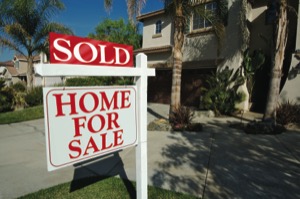
The real estate market is in a sleepy mode, and there are lots of reasons for this. This is the first of a two-part peek at the forecast for 2016, and in this first of the series, we’ll lay out the forces that are at play, setting the stage for what is to come.
In the 1970s when inflation was high and unemployment was too, the words “stagnation” came to define an economic climate characterized by sluggishness. Goods and services were expensive (inflation) and fewer buyers with the means to purchase them, created the slowdown. In a sense, even though employment numbers have been on the rise, we have a similar situation driving the sale of real estate today.
The California Association of Realtors predicts that existing home sales in the state are expected to rise in 2016 by over 6 percent. It also suggests that 2016 will have the slowest rate of price appreciation in five years. A shift to inland areas is also predicted, with diminishing affordability making coastal areas available to the top buyers only.
Inventory is tight, interest rates are expected to rise, and the lack of affordability are all factors in suppressing activity. Let’s look at these factors a little more closely.
Why low inventory? Inventory is low for a variety of reasons. There are few foreclosures left on the market and not much new construction at the moment with most of the new communities in the higher price ranges. Owners are not listing because there’s no place they want to go that is affordable and more stringent mortgage standards make it more difficult for them to qualify. (In 1985 the average time holding a property was five years; from 1993-9 it rose to an average of eight years and in 2015, that number rose to 10.) As rentals have risen, investor owners would rather rent than flip.
Interest rate worries. The low mortgage interest rates in recent years have partially been responsible for the price appreciations, now driving a current lack of momentum. Now that interest rates are scheduled to rise, appreciation will be stymied, further reducing inventories.
Affordability. This, without doubt, is the biggie. The pool of potential buyers is slimmed by the inability of many people, their wages flat, to afford to purchase a home. In the country in general, home ownership is at a 50 year low. Millennials are also suffering from the burden of college debt and first-time buyers are just shut out of the marketplace. This is especially relevant in California, where the median price of a home in 2016 is predicted at over $490,000. Though unemployment in the state is forecasted under 6 percent in 2016, the disparity between income and cost is still too wide to swim.
So the state of the real estate market is that inventory is low, prices high, interest rates about to pop up and lots of would-be buyers simply priced out. You might say, “Something has got to give,” to create a better match for buyers and sellers. If it doesn’t, we may see the word stagnation in the news again.
In the next article, we’ll revisit the state of the marketplace, and look at how different areas of California are faring. Stay tuned.











